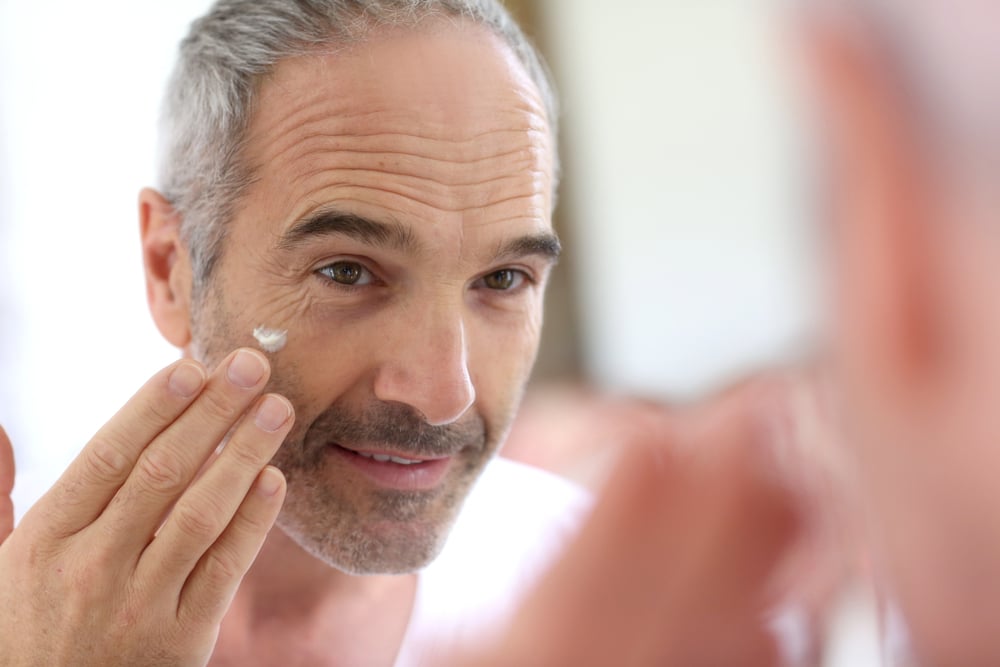You probably know that too much exposure to the sun's ultraviolet (UV) rays can lead to skin cancer. But did you know the sun is also responsible for many unwanted skin changes, like wrinkles, discoloration, and uneven skin tone? These sun-induced changes are collectively called photoaging, and people of all skin tones are susceptible. So, what is photoaging in more detail, and is there anything you can do about it?
You'll be happy to know that a few simple adjustments to your daily routine can prevent—and even help reverse—some of these changes. And it's never too late to start no matter where you are on your skin journey. Here's everything you need to know.
What Is Photoaging?
It's easy to blame your wrinkles or lax skin on your genes or the passage of time. But you may be surprised to learn the main culprit is actually the sun.
While birthdays and genetics do play a role in skin aging—a process called chronological or intrinsic aging—the sun's rays play a bigger role. In fact, the sun damage you accumulate throughout your life is directly responsible for about 90 percent of visible skin changes. Over time, UV rays degrade the essential fibers that give your skin structure and keep it firm, smooth, and youthful-looking.
Signs of Photoaging
You may notice signs of photodamage as early as your teens or 20s. This may include:
- Fine lines and wrinkles
- Decreased elasticity
- Rough or uneven skin
- Blotchiness and hyperpigmentation, like sunspots
- Enlarged or broken blood vessels
Distinguishing UVA and UVB Rays
UVA and UVB rays both contribute to photoaging but damage the skin in different ways. UVA rays are longer and comprise most of the radiation that hits the Earth. These rays affect all of your skin's layers, where they damage collagen fibers and compromise elastin production. UVB rays are shorter and mainly damage your skin's outer layer. This causes sunburn and cellular damage that can lead to skin cancer.
The Hidden Danger of Visible Light
The sun isn't the only source of photoaging. Visible light—like the blue light your phone, tablet, or TV emits—can lead to oxidative stress, inflammation, hyperpigmentation, and extracellular matrix (the network that gives your cells and tissues structure) damage.
How to Prevent Photoaging
Photoaging doesn't have to be your destiny. Regularly protecting your skin from UV rays can prevent photodamage and the resulting signs of photoaging. The easiest way to do this is to use a broad-spectrum sunscreen with SPF 30 or higher every day. To help block blue light, apply a tinted formula containing Iron Oxides like EltaMD UV Clear Tinted Broad-Spectrum SPF 46. Infused with antioxidants like Niacinamide and Vitamin E, this formula blends in easily with all skin tones.
How to Reverse Photoaging
While you can treat the signs of photoaging, you can't reverse them completely. The first step—no matter your age—is to regularly protect your skin from the sun. This will help prevent more damage while you focus on treating the already visible signs.
Try incorporating these skin-rejuvenating ingredients into your skin care routine to promote smooth, even, healthy-looking skin.
Retinoids
Retinol and Retinoids, which are related to Vitamin A, help regulate skin growth by removing dead skin cells and letting new cells come to the surface. They also help stimulate collagen production, minimize the appearance of wrinkles, and even out skin tone and texture.
Antioxidants
Antioxidants like Vitamin C and Niacinamide help block free radical damage, decrease collagen breakdown, and repair the signs of photoaging.
Professional Treatments
Chemical peels with alpha- and beta-hydroxy acids (like Glycolic Acid and Salicylic Acid) can help reduce hyperpigmentation and improve uneven skin tone and texture. Your Dermatologist can also recommend more advanced in-office treatments, like lasers, dermabrasion, and injections (like Botox or fillers) to help you reach your skin goals.
Building Your Fountain of Youth
Sun protection isn't just about preventing skin cancer—it's also about preventing photoaging and promoting your healthiest, most vibrant skin. Little habits like wearing sunscreen every day can lead to big changes in how your skin looks and feels. And remember, it's not too late to start today!

